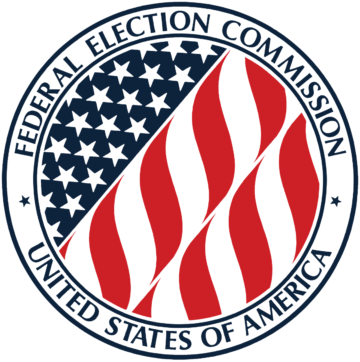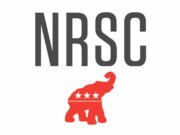Via Electronic Filing
Robert M. Knop
Assistant General Counsel
Federal Election Commission
1050 First Street, NE
Washington, DC 20463
RE: Regulation 2014-02
fec
The proposed regulations could simplify and clarify reporting and would help bring these regulations into compliance with clear U.S. Supreme Court guidance on independent expenditures.
I. A. Proposed New 11 CFR 102.12(c)(2)(i) and 102.13(c)(2)(i)—Definition of ‘‘Support’’
Under Alternative B, “authorized [candidate] committees would be allowed to make independent expenditures in any amount.” This Alternative is clearly preferable. Most importantly, it would bring the regulation into compliance with clear precedent from the Supreme Court. We agree with the Commission’s conclusion “that ‘it is unlikely that independent spending by authorized committees would be deemed more potentially corrupting than independent expenditures by individuals, political parties, or corporations, each of which has been found [by the Supreme Court] to have a constitutional right to make unlimited independent expenditures.’”
That conclusion resolves the question. While the NPRM asks for feedback concerning “the implications of authorized committees’ potentially using substantial portions of their resources on independent expenditures,” such considerations are irrelevant. It is not the role of the Commission to weigh the outcomes of constitutionally-protected activity, and to then sanction or condemn that activity based upon its judgment of those consequences’ utility. Indeed, Congress has expressly and broadly authorized candidates to use the contributions they receive for “any . . . lawful purpose.”[1]. Thus, the Commission has no authority to regulate otherwise lawful disbursements, much less substitute its judgment as to the wisdom of a candidate’s campaign strategy or budgeting involving the “portion of their resources” devoted to independent expenditures.
II. B. Proposed Revisions to 11 CFR 104.3— Contents of Reports and 11 CFR 104.4— Independent Expenditures by Political Committees
The Commission asks whether authorized committees making independent expenditures should “report more or less detailed information about those disbursements than other political committees.” Since an authorized committee is a type of political committee, the best answer is the simplest. They should be required to provide the same information as any other political committee. There is no basis for treating authorized committees in a discriminatory manner. Authorized committees’ receipts and disbursements are already subject to extensive public disclosure. There is certainly no justification for mandating more disclosure of their independent expenditures than other political committees considering the legitimate purposes of disclosure identified by the courts.
III. Proposed Revisions to 11 CFR 104.3 and 104.4—Reporting Multistate Independent Expenditures by Political Committees
The Commission should be commended for proposing revisions to clarify, simplify, and reduce the reporting burdens for these reports. These changes would benefit speakers, the public, and the Commission.
However, Alternatives A and B are flawed in one respect. Each would require filing of many 24-hour or 48-hour reports that are not required by law. Under these alternatives, the threshold for reporting would be just $1,000, in the aggregate, for potentially all 50 states and the District of Columbia. By contrast, the statutory requirement is $1,000 per state for a 24-hour report and $10,000 per state for a 48-hour report. The statutory threshold is necessarily a state-based threshold because the independent expenditure filing requirement is tied to the date of the election, which for presidential primaries, caucuses, and conventions varies from state to state, and additional reports must be filed for additional expenditures “with respect to the same election as that to which the initial report relates.”[2]. Although the Commission promulgated a regulation stating that all presidential primary elections in a calendar year are one election for the purposes of calculating contribution limits,[3] that regulation excepts the presidential general election, id., and cannot otherwise supersede the state-based statutory thresholds for independent expenditure reporting.
Alternative C would not impose new filing requirements, and it would “satisfy the Act’s provisions for reporting independent expenditures.” However, it is unnecessarily complex and would create misleading reports. The required reports would allocate a national expenditure to each state by its proportion of congressional districts. In doing so, it would create a haystack of reports and make it more, not less, difficult for the public to understand the overall cost of a national expenditure.
If Alternative A were slightly modified, it would clearly be the superior option. Under this alternative, there would be just one reporting date from which to calculate whether a 24-hour or 48-hour report is required. Likewise, the dollar threshold for reporting would be consistent. This would greatly simplify reporting burdens and ease the FEC’s enforcement efforts.
In order to avoid having Alternative A force groups to file many reports not required by the statute, we suggest modifying the threshold for reporting to $51,000 for a national independent expenditure ($1,000 for each state plus the District of Columbia, which has three votes in the Electoral College). If a communication is distributed in multiple states but not nationwide, we instead suggest that the threshold should be $1,000 multiplied by the number of states in which the communication is actually distributed.
During the presidential primary season, there is never a gap of more than 20 days between primaries. In such a situation, an independent expenditure report for expenditures over $1,000 in at least one state would be due within 24 hours. Therefore, we suggest that the threshold for filing a report on a national independent expenditure be $51,000 and that this filing alternative be optional. Committees and persons making independent expenditures would be free to file reports as they do today, or to instead use the process described under Alternative C. This modified Alternative A provides an appealing balance between statutory requirements, simplicity, and meaningful information to the public.
Alternative A should be further improved by allowing filers to avoid using memo text to list all states if the communications are distributed nationally or by region. Instead the forms should allow descriptive alternatives such as “nationwide,” “all states,” or “continental United States,” and not require the filer to list in memo text all states or other jurisdictions where the communication was distributed. If a communication is distributed in most states in a U.S. Census Bureau Region or Division,[4] a filer could list areas using Census Bureau designations for regions and divisions such as “Midwest States,” “Mountain States,” “New England States,” etc.
Alternative B would add considerable complexity to filing, increasing both compliance burdens for filers and enforcement burdens for the Commission. Likewise, Alternative C would add similar burdens and, as noted above and in February 14, 2014 comments on the Draft Interpretive Rule by Robert D. Lenhard and Derek Lawlor, provide less useful information to the public.[5]
The Commission also requested input “on the number of states that would be the threshold” for multistate reporting. There appears to be a concern that “applying the new provision to independent expenditures that are disseminated in only a handful of states might result in independent expenditures that are targeted to a specific state’s primary—but partially distributed in neighboring states that share its media markets—being misleadingly reported as ‘multistate’ communications.”
It could be the Commission is asking the wrong question and may apply the wrong standard if it seeks to define a certain number of states. If the communication is targeted to a single media market, it is unlikely to be a multistate communication contemplated by the NPRM. Perhaps the best known example of that phenomenon are ads on Boston broadcast outlets that attempt to move voters in New Hampshire’s presidential primary to vote for or against a candidate. Ads aired in Boston can easily reach large portions of three states, Massachusetts, New Hampshire and Rhode Island, but the genuine target is New Hampshire.
Perhaps a better approach, for broadcast communications, would be to instead look at the way the communication is distributed instead of the number of states. Regulation 11 CFR 106.2(E) already takes such an approach. It says that “expenditures incurred for advertisements on national networks, national cable or in publications distributed nationwide need not be allocated to any State.”
If an advertisement is broadcast on any cable or over-the-air network that is distributed nationwide, then it should be eligible to be reported as a multistate expenditure or as targeted to one state primary, at the option of the filer. As a second-best alternative, the threshold could be four states, which would allow multistate reporting to be used for communications delivered by all the over-the-air national networks, national cable networks and many regional sports networks, such as Fox Sports Midwest and a number of agricultural networks. By contrast, if a communication is broadcast on a single station (including its repeaters) or only in one media market, then it would not be a multistate expenditure.
For other methods of distributing communications, a safe harbor should be provided to allow a multistate report to be filed, at the option of the filer. For independent expenditures distributed by other means, such as mass mailings or phone banks, a safe harbor should be provided to allow a multistate report to be filed, at the option of the filer. A safe harbor might allow for multistate treatment if the communication reaches at least four states or all states in at least one U.S. Census Bureau Region or Division.
In nearly every instance filers would only wish to use multistate reporting for communications that are distributed nationally in connection with a presidential election.
IV. Proposed Revision to 11 CFR 109.10—Reporting Multistate Independent Expenditures by Persons Other Than Political Committees
To reduce the chance of confusion and lessen reporting burdens, we recommend that the filing requirements for multistate independent expenditures be the same for both political committees and other persons, with one exception.
Under 11 CFR 109.10, “Every person that is not a political committee and that makes independent expenditures aggregating in excess of $250 with respect to a given election in a calendar year shall file” a report on the independent expenditure.
We recommend that the proposed regulation provide a clear multistate threshold for reporting these expenditures.[6] For nationwide independent expenditures of the type described in the NPRM, we recommend that the threshold be set at $12,750, or $250 times 50 states plus the District of Columbia. For multistate independent expenditures, the threshold should be the number of states times the $250 threshold.
V. Proposed Revision to 11 CFR 104.20—Electioneering Communications
The proposed revision to 11 CFR 104.20 regarding multistate electioneering communications is unclear. It does not explain how the cost should be reported under Alternatives A and B. Additionally, under one reading of the proposed rule, it might force government reporting of communications that are not covered by the statute. That is because reporting is required when the cost of the communication is “in excess of $10,000 during any calendar year.” The proposed rule might be read to require reporting if the cost of multistate communications exceeds $10,000 even though a portion of the cost might be for states where the communication would not be an electioneering communication. This would violate the statute’s clear terms; Reporting is required only if the cumulative costs of the communications exceeds $10,000 when broadcast in states within 30 days of a primary in each state.[7]
To address these concerns, the proposal could be modified as follows:
Alternatives A and B
(6) If the election identified pursuant to paragraph (c)(5) of this section is a presidential primary election and the an electioneering communication that is required to be reported for any particular state is publicly distributed or otherwise disseminated in more than four states but does not refer to any particular state, the electioneering communication may shall be reported as a single communication, and the states in which it constitutes an electioneering communication (as defined in 11 CFR 100.29(a)) shall be indicated in memo text. The amount of each disbursement pursuant to paragraph (c)(4) of this section may be reported as either the entire cost of the communication across all states, or as an estimate, using any reasonable method, of the portion of the cost of the communication that is required to be reported as electioneering communications.
* * *
The Institute appreciates the Commission’s invitation to submit these commits, and requests that should any hearing be held in the future on this matter, that a representative of the Institute be permitted to testify.
Respectfully submitted,
David Keating
President
https://www.ifs.org/wp-content/uploads/2018/04/2018-03-30_Keating-Comments_FEC_Feedback-And-Suggestions-On-Regulation-2014-02.pdf
[1] 52 U.S.C. § 30114(a)(6).
[2] 52 U.S.C. § 30104(g).
[3] 11 C.F.R. § 110.1(j)(1).
[4] See “Geographic Terms and Concepts – Census Divisions and Census Regions,” United States Census Bureau. Retrieved on March 30, 2018. Available at: https://www.census.gov/geo/reference/gtc/gtc_census_divreg.html (February 9, 2015).
[5] See Robert D. Lenhard and Derek Lawlor, “Request for Comments on Disclosure of Independent Expenditures in Presidential Primaries,” Covington & Burling LLP. Retrieved on March 30, 2018. Available at: https://transition.fec.gov/law/policy/nationwideiereporting/comments/lenhardlawler-nationwideiecomments.pdf (February 20, 2014).
[6] The 24-hour and 48-hour reporting thresholds are already addressed in the existing regulation.
[7] 52 U.S.C. § 30104(f).














